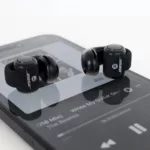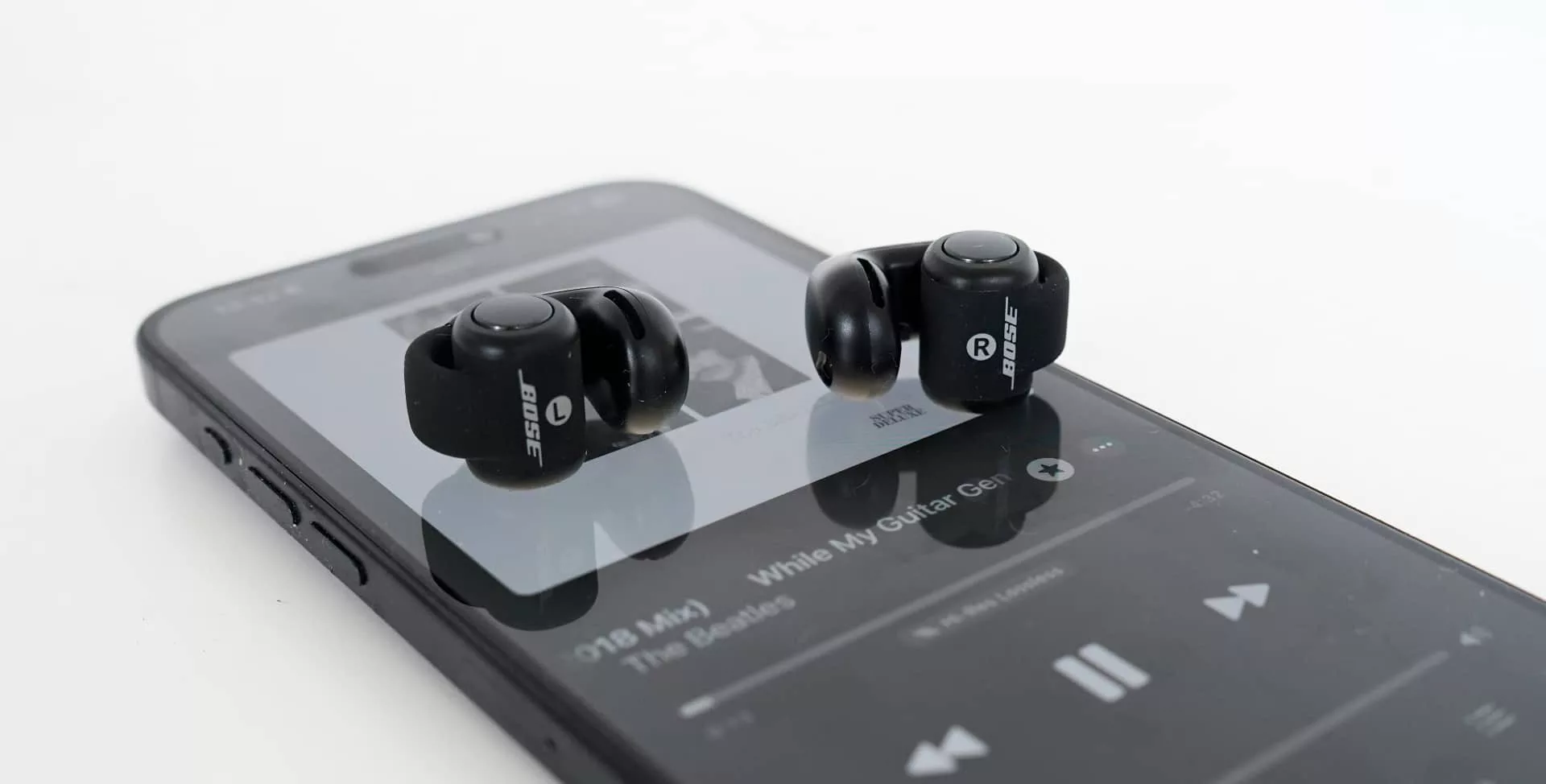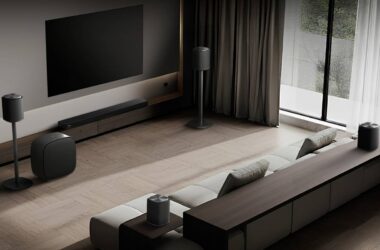Quick review
The good
The not-so-good
Listening to your music often means shutting yourself off from the world, but what if it didn’t? The Bose Ultra Open Earbuds envision a style of listening that’s one part fashion and one part always-worn.
Ever since the first earbud became engrained in our collective consciousness, manufacturers have been looking for a better approach.
Earbuds don’t typically fit all ears, while earphones can be moulded to fit comfortably thanks to ear gels, ear wings, and ear tips, each bit a little piece of malleable plastic, rubber, silicone, or foam that can help an earpiece fit ears of all shapes and sizes comfortably.
While earphones and tip-equipped earbuds are adjustable, not everyone loves the feeling of one. In fact, some people just prefer the simplicity behind throwing in an earbud and listening without issue.
They might even prefer a more “open” style of listening, something earphone and earbud tips prevent. With a tip, you’re essentially tightening the fit with a small piece suited to the holes of your ear, which also can block the sound of the outside world. Handy for noise cancelling earphones, but less so if you like to stay aware.
It’s no wonder that companies like Bose are experimenting with more open styles of earphones, offering some intriguing ideas up over the years. We’ve heard of a neck band speaker, while the Bose Frames essentially turned a pair of sunglasses into earphones thanks to tiny speakers. They were neat, but not fantastic for use indoors, given they were sunnies.
Bose’s latest experiment is a little more indoors friendly. In fact, one could argue that the Bose Ultra Open Earbuds are the company’s first pair of earbuds made for always-on, always-worn listening, or about as close as it gets.
Are they worth owning and wearing, or would a pair of proper earphones work best for your needs?

Design and features
Designed more like a pair of earrings or even a cufflink for your ears, the Bose Ultra Open Earbuds aren’t your usual set of earphones. They don’t look like any other pair we’ve seen before, and more resemble a pair of rings that you’ll flex around your ears.
There’s a rigid speaker system up top plus a little battery section in rubber that rolls out around the fleshy rim of your ears, and once you put them on, they really do look like earrings. This reviewer’s wife thought he looked like a proper hipster with overly large earrings. You know the sort.
This tiny speaker system is rated IPX4, making it sweat resistant, and there are two microphones on each bud, as well.

In-use
The design of the Bose Ultra Open is so different, you may find yourself reaching for the in-app manual to work out how to wear them. We certainly did the first time, because they’re just that unusual.
But once you get the hang of wearing them, putting them on is easy. They do sometimes fall off upon throwing them in, and you may need to scramble to protect them from falling to the ground, but 90 percent of the time, we found they fit easily and grip nicely.
And all without tips or gels, or really anything earphones are known for. Credit to Bose: these may look unorthodox, but they hold nicely. We’re hesitant to say you could share them with friends — you shouldn’t share earphones with anyone — but the Bose Ultra Open don’t actually go in your ear holes, just outside of them.
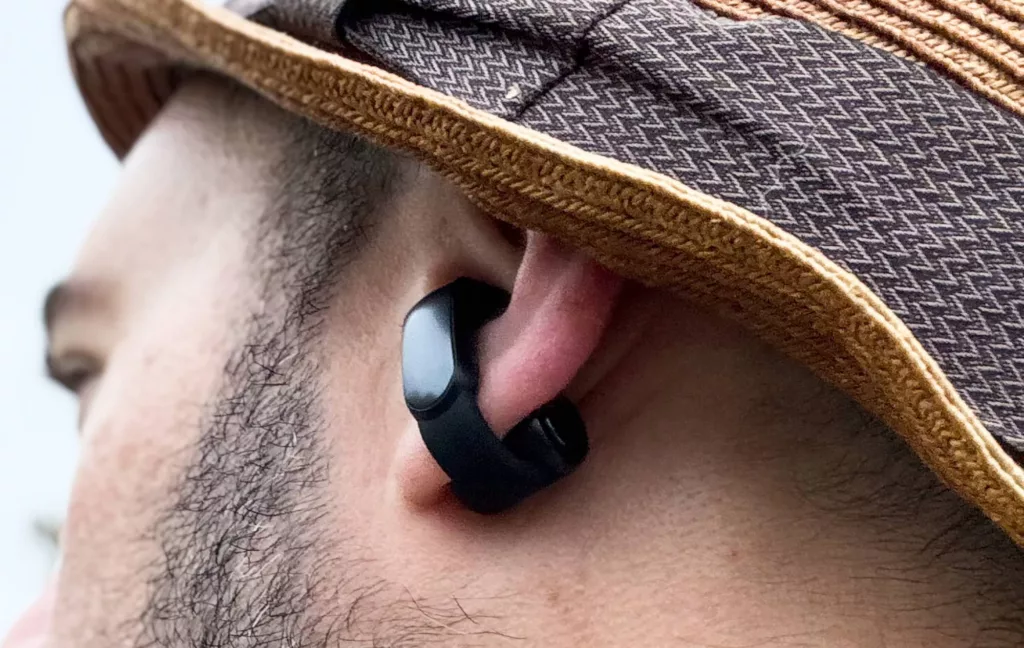
That’s part and parcel of Bose’s totally open design, though it is one that comes with limited controls.
Specifically, there is but one button on each side, and they’re mostly there for pausing and playing. You can customise it a little, but don’t expect the swiping touch controls seen on the Bose QC Ultra.
You do get the same app, however, and that means support for the spatial tracking immersion mode is here.
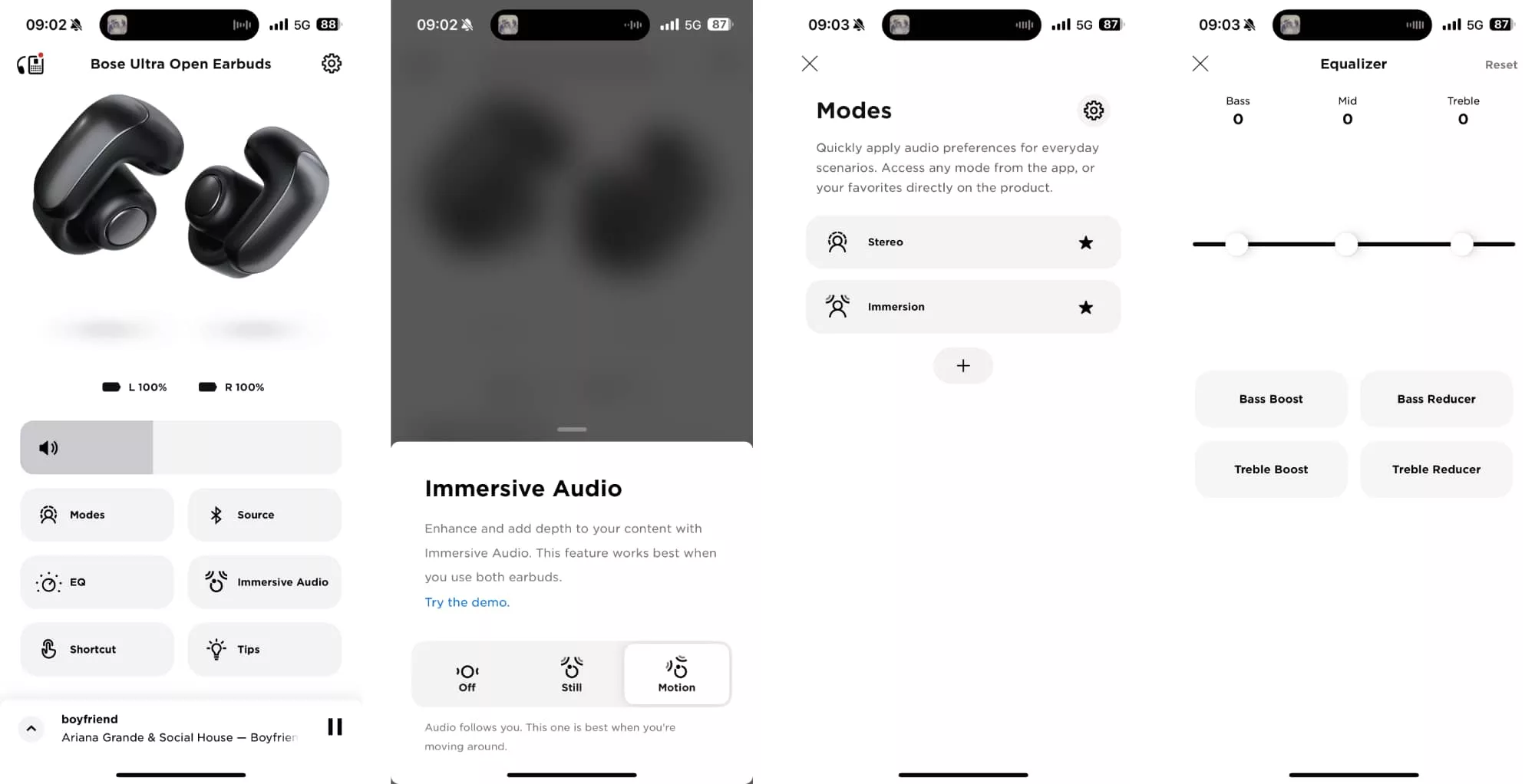
Performance
Before we get to how that sounds, let’s get stuck into the overall sound of the Bose Ultra Open, testing them out with the Pickr Sound Test, our specific set of tracks you can try for yourself on Apple Music, Spotify, and YouTube Music, too.
That starts with electronic where the sound in Tycho and Daft Punk delivered decent highs and mids amidst a surprisingly spacious sound stage, though the lows were shallow. Holding the earpiece directly to the ear improved the bass slightly, but it’s clear that you’re losing a little to the lows.
Through the pop of Carly Rae Jepsen, the sound was nice, but the impact fell flat at times, largely because the bass lacked impact. You can hear aspects of it, such as the sound of the punch in Mark Ronson’s “Uptown Funk”, but the emphasis isn’t there. You won’t feel the lows the way you can with other earphones, and in some sounds, you may not even experience the bass.
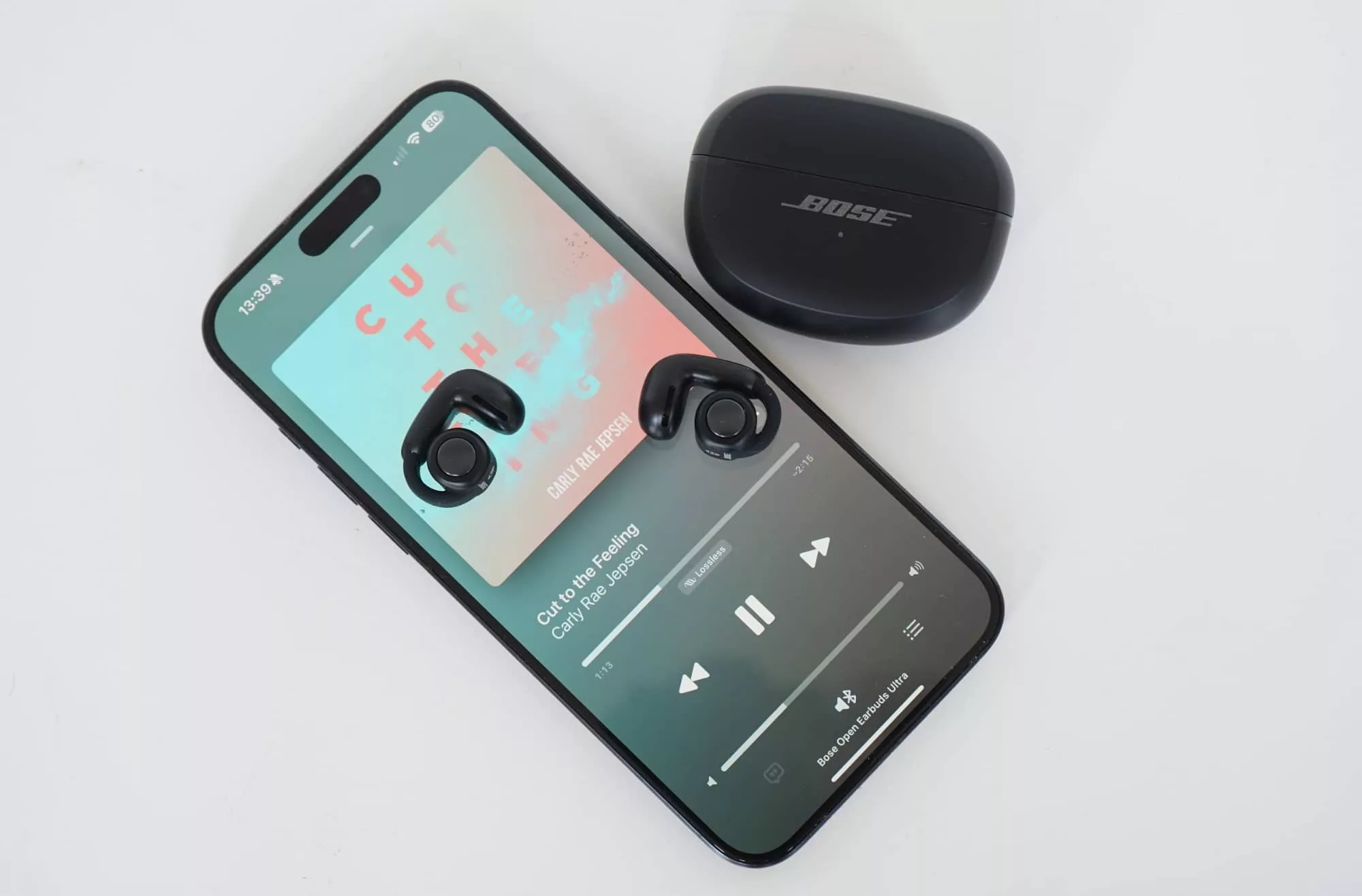
Throughout this, there’s a detailed soundstage all the same, but the bass is lacking, though it doesn’t matter with some music styles.
We didn’t feel it was as much of a problem in jazz or classical, or even some of the older rock from the likes of Bowie or The Beatles. The lack of hefty bass wasn’t a problem here, and didn’t diminish the sound remarkably.
In short, some music styles will feel the lack of bass more, and some won’t. It’s enjoyable all the same, we found.
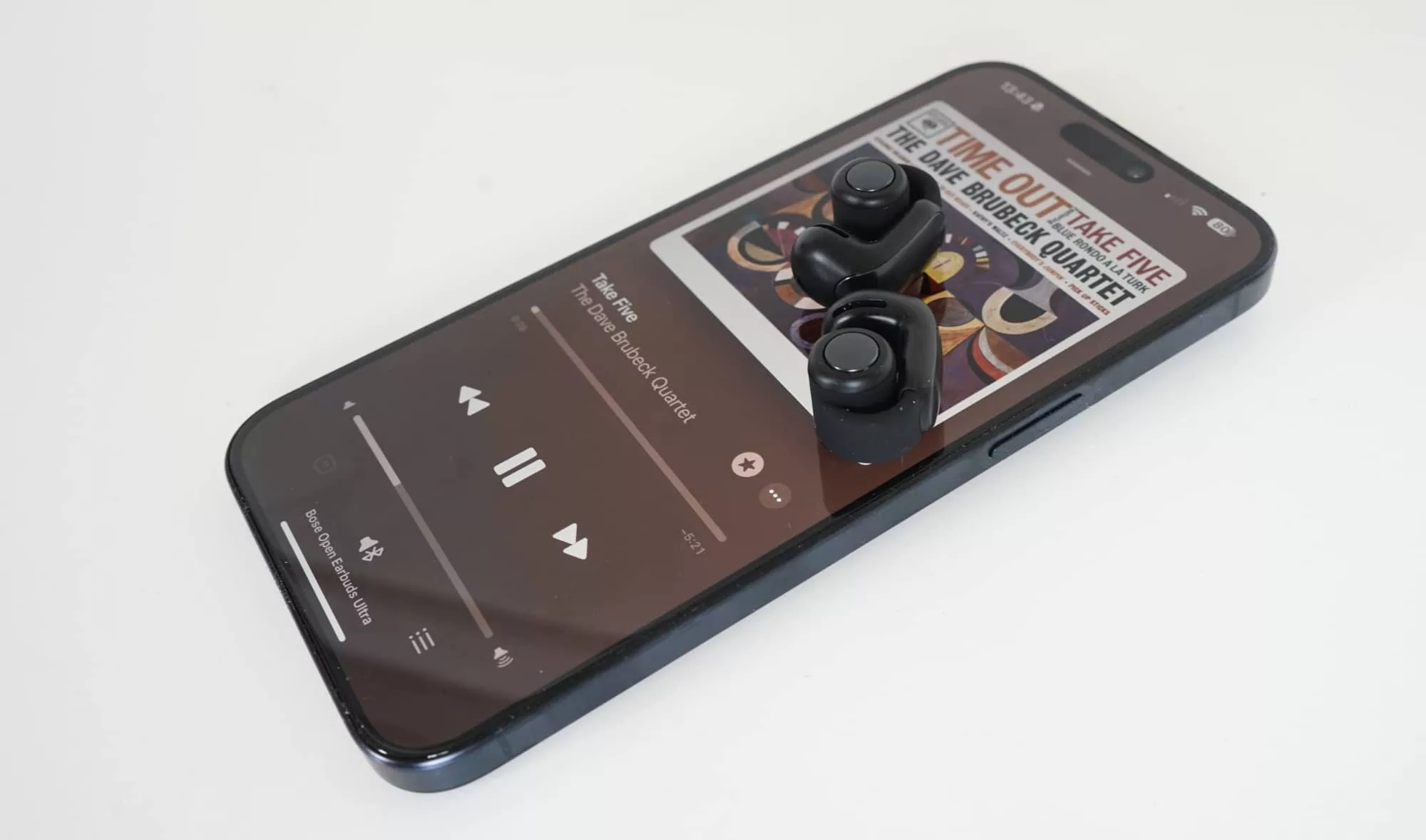
Immersion mode
Like their Ultra noise cancelling earbud siblings, the Bose Ultra Open also support immersion mode, which means you can hear how Bose tracks your head and position in real time, and even a little bit of your body.
Bose supports two head-tracking modes, both of which work regardless of the music service you use, but neither let you tap into a true Dolby Atmos track on Apple Music.
You’ll get the Bose interpretation, which in fairness is as the saying goes “good enough for jazz”, or even any other sort of music. There’s “still” and “motion”, with the former used ideally when it’s just your head moving — typically when you’re sitting down — while the latter is for when your head and body are moving, such as when you’re walking.
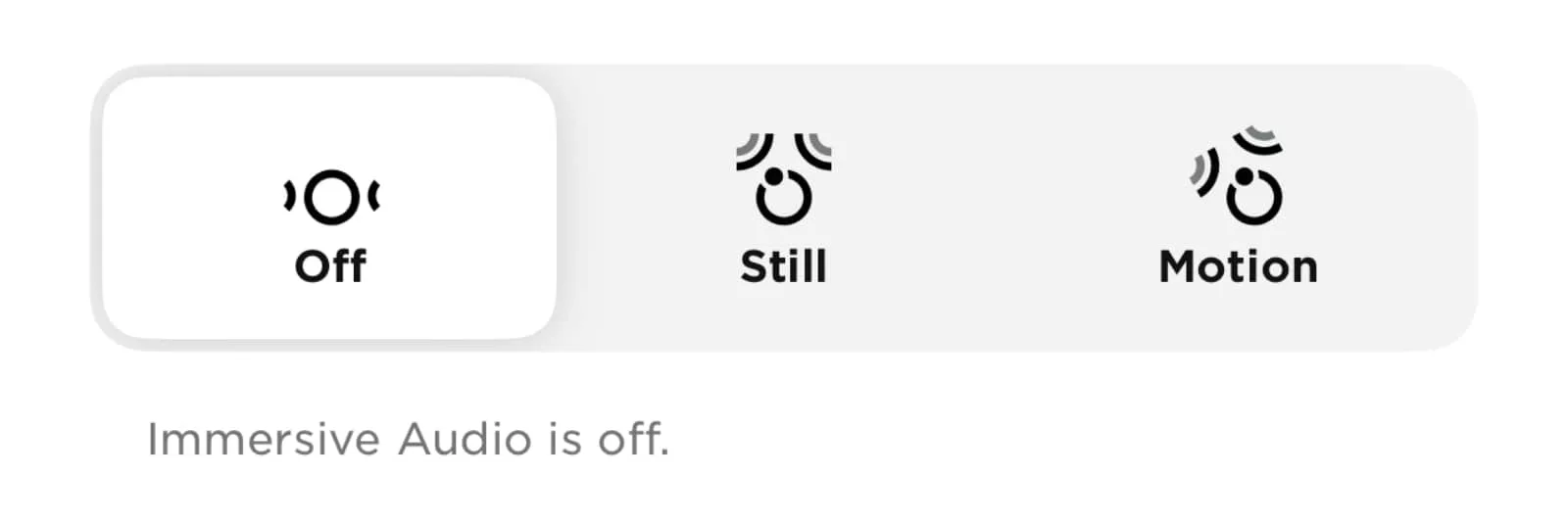
Like we experienced when we reviewed the Bose QC Ultra Headphones, the result delivers a relatively solid level of head tracking, even if what you hear isn’t a pure spatial track the way the engineers or artist intended.
However, there are discrepancies that make the Bose Ultra Open earbuds different, with lag being an issue. More than what we found on the latest Quiet Comfort range, the Ultra Open seem to suffer from disconnects between the two earbuds in spatial that aren’t there in stereo.
Listen in stereo and the Bluetooth lags are minor, if barely noticeable. Switch to an immersive mode, and one of the earbuds will get more sound than the other, while the tracking might work and might not.
It feels like a software or firmware problem, and one we’re sure Bose will fix, but at the the time of release, the immersive mode on the Bose Ultra Open isn’t as solid as it is on its other supported models, both of which we thought were among the best tech of 2023.
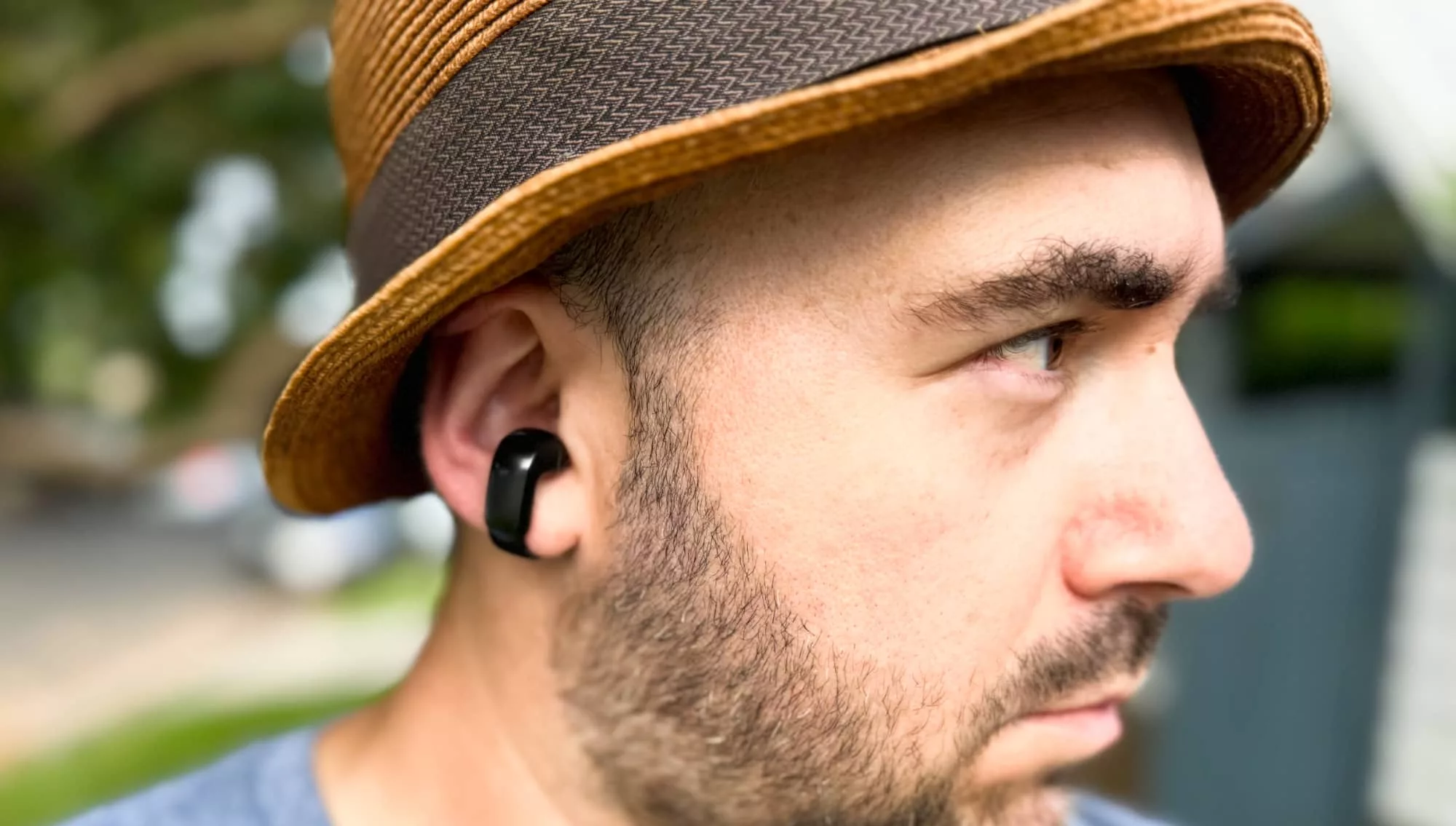
Battery
There’s another good reason to switch the immersion off listening to the Ultra Open: using one of the immersive modes cuts battery life nearly in half, moving from just over seven to closer to four.
Keep things stereo and you’ll find you can leave the Bose Ultra Open Earbuds in for much of your day, taking them off for a recharge for an hour or so, and then getting back in.
It’s a solid result, with the case giving you a good 19 more hours, too, giving you a good almost three recharge cycles. It needs a charge over USB-C, but that’s everywhere these days. You won’t find a wireless charging case in the box, a shame given the cost of the earbuds, but that seems to be the norm for Bose, making it an optional extra.
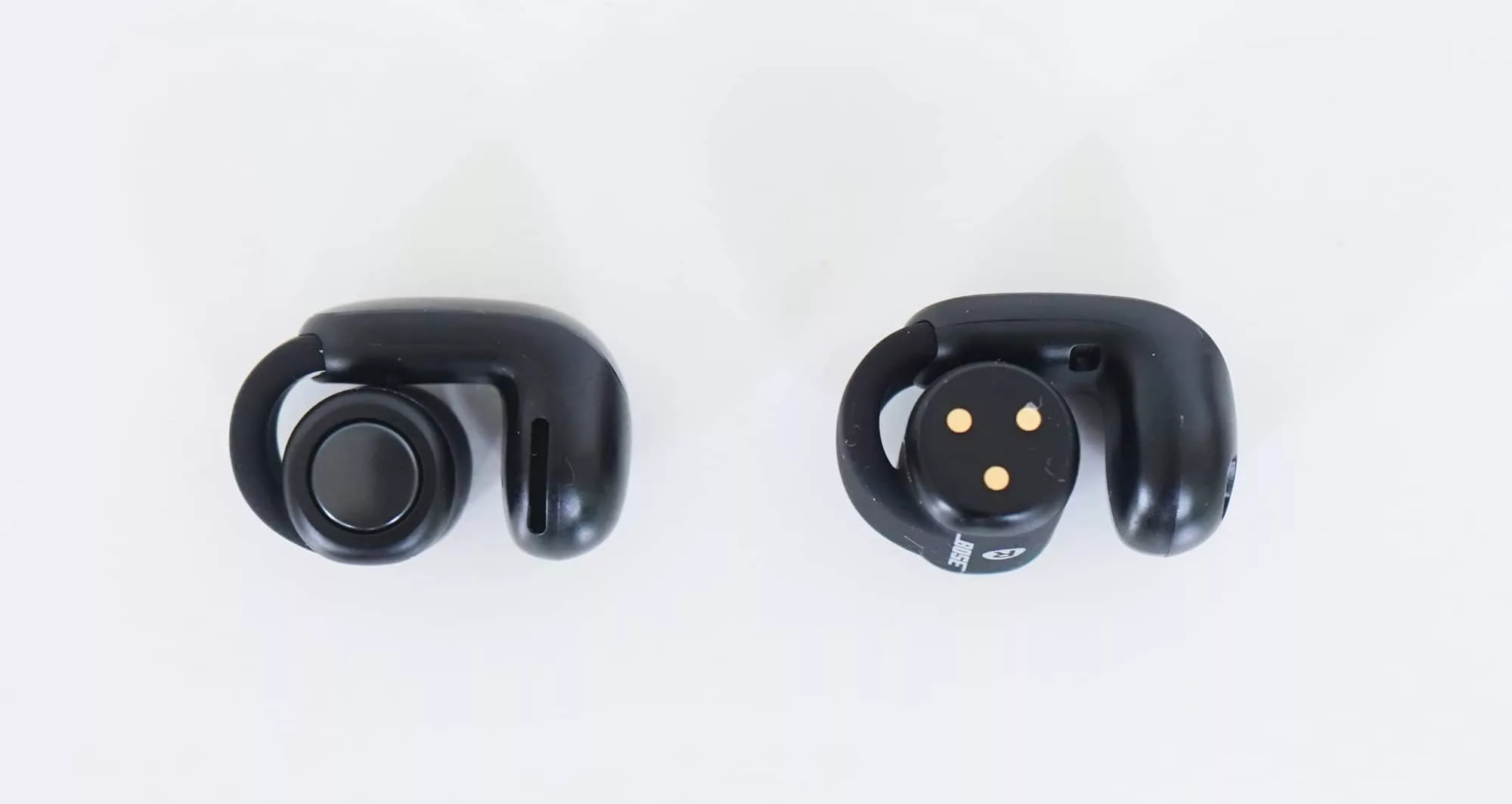
Value
Priced at $449 in Australia, the Bose Ultra Open can seem expensive for what they are simply because of what the $400 mark normally gets you in Australian earphone pricing: noise cancellation.
Most truly wireless earphones priced north of $350 come with noise cancellation, and the Bose Ultra Open Earbuds go in the totally opposite direction. There is no noise cancellation or suppression here.
In stark comparison, these are totally open, designed to let you hear the outside world. That’s the point of these earbuds entirely.
The near-$450 price tag doesn’t feel equitable simply because you’re missing out on noise cancellation, and are instead getting a totally open design.
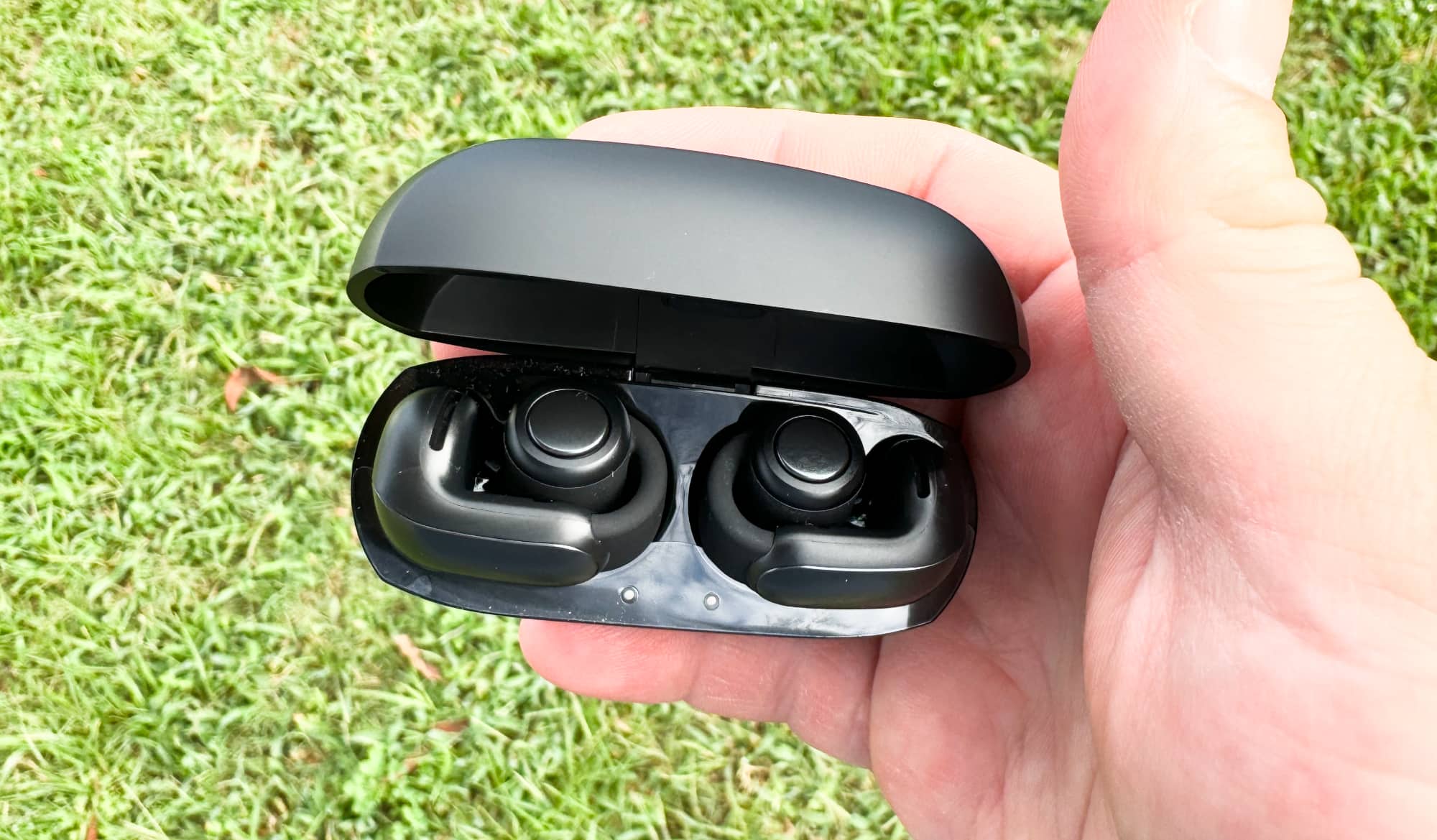
What needs work?
The lack of any hefty bass is something you won’t be able to avoid, but we didn’t think it was so thin that it warranted a problem. In fact, in classical, jazz, and even some rock, the softer bass didn’t impact the overall sound significantly. These still sound quite solid.
The absence of controls can be a little more difficult to wrestle with. In some ways, the Bose Ultra Open feel like they’re made for owners with a decent wearable, ideally one that can control the music for them. Something like an Apple Watch or a Galaxy Watch would be ideal.
Outside of these issues, the quirks with Bluetooth and immersion mode are slightly concerning, though will likely be fixed up in time, but the cost is a more serious problem.
Priced the same as noise cancelling earphones, the Bose Ultra Open seem like they cost too much. You don’t get a wireless charging case, either, and it’s difficult to find the value here, particularly when so many earphones – Bose’s included — offer transparency modes inside noise cancelling designs.
This is definitely one of the more experimental pairs of Bose headphones, and like the Frames before it, they come with a typically premium Bose price. We’re just not sure it’s entirely warranted.
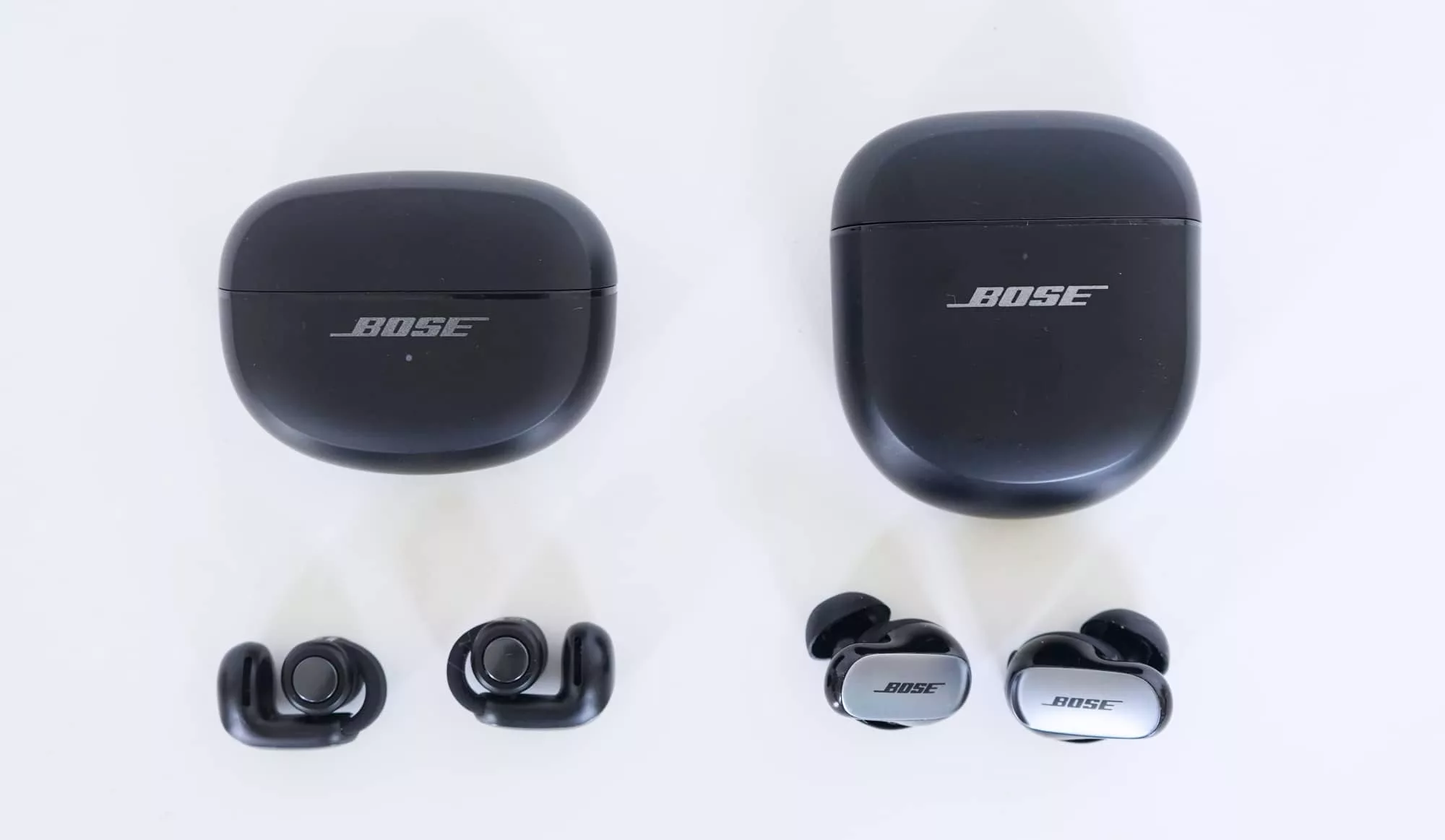
Bose Ultra Open vs the competition
Interestingly, the competition for the Bose Ultra Open earbuds is a little limited, simply because open audio is a somewhat nascent category. Shokz makes open earphones that use bone conduction, while Sony offers a pair of open earbuds with a ring-shaped driver.
Short of revisiting the B&O Earset — which haven’t been updated in quite a while — earbuds designed to be open in this way are rare.
However, earphones and earbuds with a transparency mode? They are markedly less rare. They are everywhere. And given the main feature in the Bose Ultra Open is listening to your music while being able to hear the world, that’s a feature most earphones can accommodate.
Hear-through, ambient, and transparency modes let you switch on the mics and listen through the earphones, so you can hear music and listen to the outside world, and these exist on most earphones over $200 these days, with some under also scoring the feature. They vary in quality, but you can typically find the better ones on noise cancelling earphones, giving you two features you may want: hear through and the ability to cancel out sounds.
The Bose Ultra Open Earbuds only offer one of these features, and while they do it in a creative way, it means the competition comes from more feature-packed ANC earphones, not just the limited range of other open earphones.

Final thoughts (TLDR)
Despite this, there’s something to admire about the Bose Ultra Open. They deliver something different, with a sound and style that’s surprisingly easy to fall for.
Like the Bose QC Ultra, the quality is impossible to deny and the sound excellent, but the design and fit will likely split the room. Not everyone will like the way you wear them, and some will actively prefer to shut out the sound, compared to the way Bose is keeping everything open.
But if you yearn to keep your music going while doing everything else, the Bose Ultra Open Earbuds make a lot of sense.
These are clever. They’re a fun way to keep the sound with you all the time. It’s like background audio in earring form. They’re earbud earrings that actually work.
There are things Bose clearly needs to tweak and improve upon, and we expect we’ll see some patches and firmware updates making things better. But for a first-gen product, the Bose Ultra Open are a delightful surprise some might find genuinely useful.
